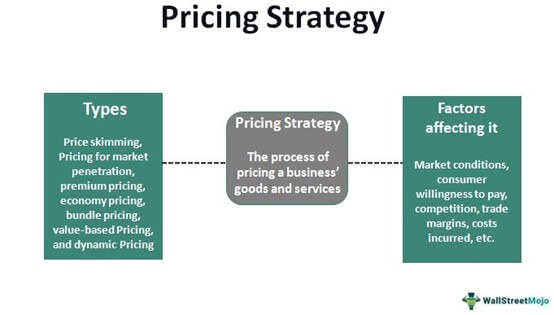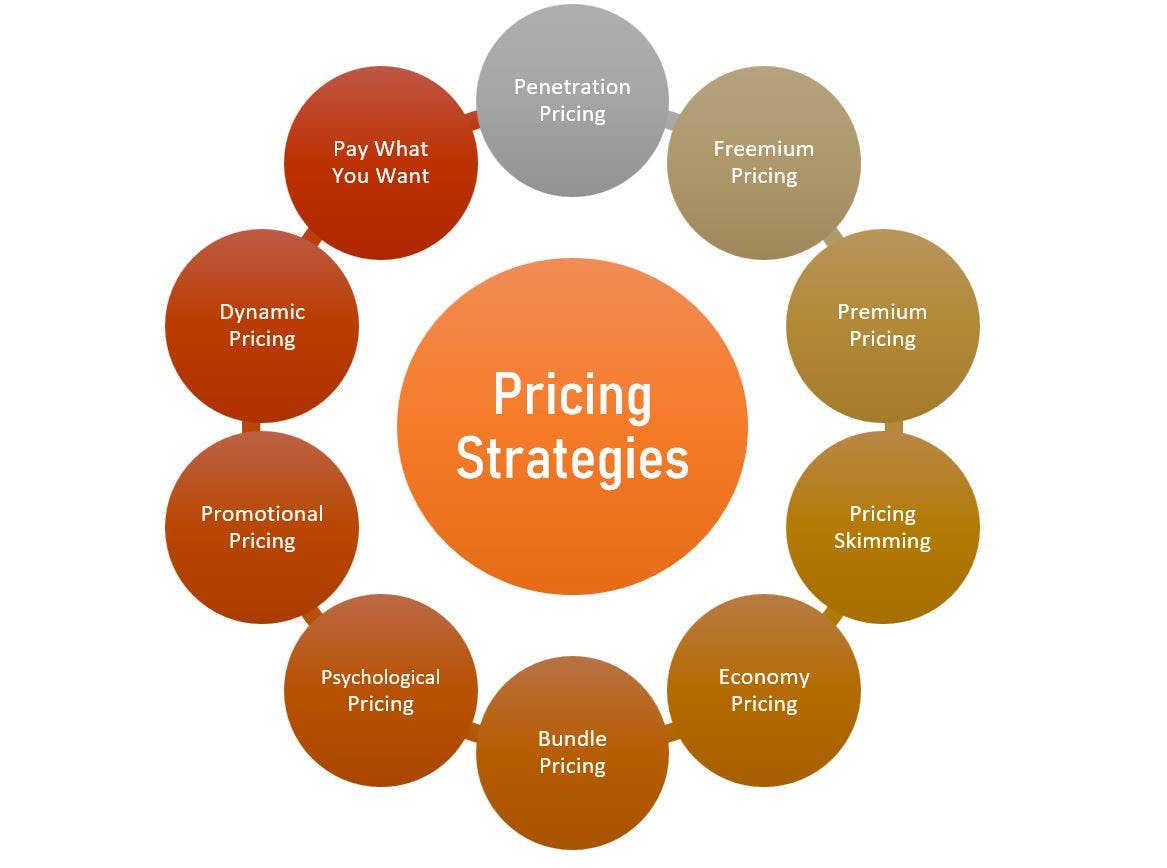Recognizing Pricing Techniques: A Guide to Boosting Competitiveness
In a significantly affordable landscape, grasping prices approaches is necessary for services intending to boost their market setting. Numerous prices designs, such as value-based and cost-plus approaches, can substantially affect how a firm interacts its worth proposal. In addition, recognizing competitor pricing and the emotional elements that influence customer actions can produce a nuanced approach to rates that resonates with target audiences. Nonetheless, the application of these strategies is not simple-- there are important factors to consider that could figure out success or failing. What elements should be focused on to guarantee effectiveness in this vibrant atmosphere?
Significance of Rates Approaches
In the competitive landscape of organization, the significance of rates strategies can not be overemphasized. Prices serves as an important bar for companies, influencing both market positioning and consumer assumption. A well-defined prices approach can improve productivity, drive sales, and establish a competitive edge.

Comprehending client actions is necessary in crafting pricing techniques. Insights into price level of sensitivity, perceived value, and affordable offerings enable businesses to adapt their prices models accordingly. In addition, routine analysis of pricing performance is necessary to react to market characteristics and customer fads.
Eventually, a robust pricing technique is indispensable not just for revenue generation yet likewise for lasting business viability. It shapes brand name identity, influences consumer commitment, and plays a critical function in the overall advertising and marketing strategy. Thus, organizations must invest time and sources in establishing and fine-tuning their prices approaches to grow in an ever-evolving market.
Kinds of Rates Versions
Just how do companies determine one of the most efficient means to price their product and services? The answer lies in comprehending different prices designs, each fit to various market conditions and company objectives.
One prevalent version is cost-plus pricing, where a fixed percentage is included to the total cost of production. This method guarantees that all prices are covered while creating an earnings. Alternatively, value-based prices concentrates on the regarded worth of the item to the consumer, permitting organizations to bill a premium based upon client demand and fulfillment.
Another strategy is vibrant prices, typically used in markets such as travel and hospitality. This version readjusts prices in real-time based upon market need, rival prices, and other external factors. Infiltration pricing is likewise considerable, where companies originally set reduced costs to enter an open market and gain market share, later on enhancing prices as soon as a client base is established.
Finally, skimming rates involves setting high initial costs for new or ingenious products, maximizing very early adopters before decreasing rates over time. Recognizing these models allows organizations to purposefully place themselves in official site the market, straightening their prices techniques with their overarching goals.

Studying Rival Prices
Comprehending competitor pricing is an essential facet of developing an efficient prices technique. Organizations has to perform thorough evaluations of their rivals' rates frameworks to recognize market positioning, examine prospective dangers, and reveal possibilities for distinction. This entails gathering data on competitors' rates, marketing techniques, and any price cuts or motivations they provide.
Start by recognizing crucial rivals within your market. Utilize different tools such as marketing research reports, rival web sites, and pricing contrast systems to gather pertinent info. Analyze their prices models, consisting of any tiered rates systems, subscription fees, or mass discounts. Recognizing the rationale behind these rates strategies can supply understandings into customer habits and preferences.
Consider the ramifications of competitor prices on your worth recommendation. If rivals use comparable products at reduced rates, you might require to highlight unique marketing factors or boost client service to validate your pricing.
Ultimately, evaluating competitor prices not just educates prices decisions but also helps companies remain affordable in a constantly advancing market landscape.
Psychological Rates Strategies
Mental prices techniques utilize consumer psychology to affect acquiring decisions and boost the viewed worth of products. One usual technique is charm rates, where prices are this website established simply listed below a round number, such as $9.99 rather of $10.00.
Another efficient approach is reputation rates, where higher costs are connected with higher high quality. This approach appeals to customers' desire for condition and exclusivity, placing items as superior offerings. Additionally, bundling products together at an affordable rate can create a sense of value, triggering clients to acquire even more than they at first planned.
Deficiency rates, which emphasizes restricted availability or time-sensitive offers, can also set off seriousness, pushing consumers to act quickly. By understanding and applying these mental rates techniques, companies can successfully form consumer perceptions, drive sales, and inevitably enhance competitiveness out there.
Implementing and Changing Methods

Once data is gathered, businesses need to review their pricing designs versus existing market problems. This might involve adopting dynamic pricing techniques that permit real-time modifications based on supply and demand fluctuations. Companies ought to likewise consider segmenting their market to tailor prices for different consumer teams, boosting perceived value and driving sales.
On a regular basis reviewing rates approaches is crucial. This can be attained through A/B testing or consumer responses, which supplies understandings right into the effectiveness of current rates. In addition, services ought to remain adaptable to adapt to unforeseen changes, such as financial check this slumps or emerging competitors.
Verdict
To conclude, efficient pricing approaches function as an important component for companies aiming to boost competition in a varying market. By leveraging numerous rates models, assessing rival pricing, and using mental techniques, firms can much better position themselves and connect value to customers. Moreover, frequently readjusting these techniques in response to market characteristics and consumer actions is vital for guaranteeing long-lasting sustainability and profitability, eventually driving sales and fostering customer loyalty.
In an increasingly competitive landscape, understanding pricing techniques is important for businesses aiming to improve their market placement. Understanding competitor prices and the emotional facets that influence consumer behavior can produce a nuanced technique to prices that resonates with target audiences.Comprehending competitor prices is an essential facet of formulating an effective rates strategy. Analyze their pricing designs, including any kind of tiered rates systems, subscription fees, or bulk discounts. By leveraging various prices models, analyzing competitor pricing, and employing psychological strategies, business can better position themselves and interact value to consumers.
 Amanda Bynes Then & Now!
Amanda Bynes Then & Now! Michael Oliver Then & Now!
Michael Oliver Then & Now! Robert Downey Jr. Then & Now!
Robert Downey Jr. Then & Now! Mary Beth McDonough Then & Now!
Mary Beth McDonough Then & Now! Justine Bateman Then & Now!
Justine Bateman Then & Now!